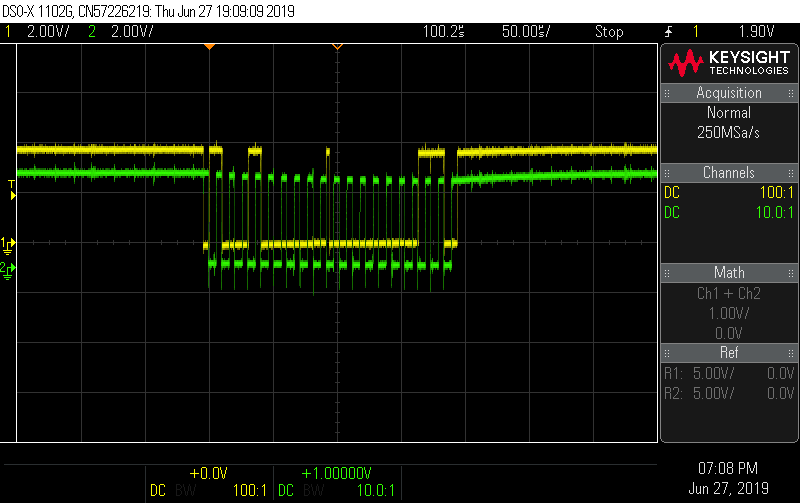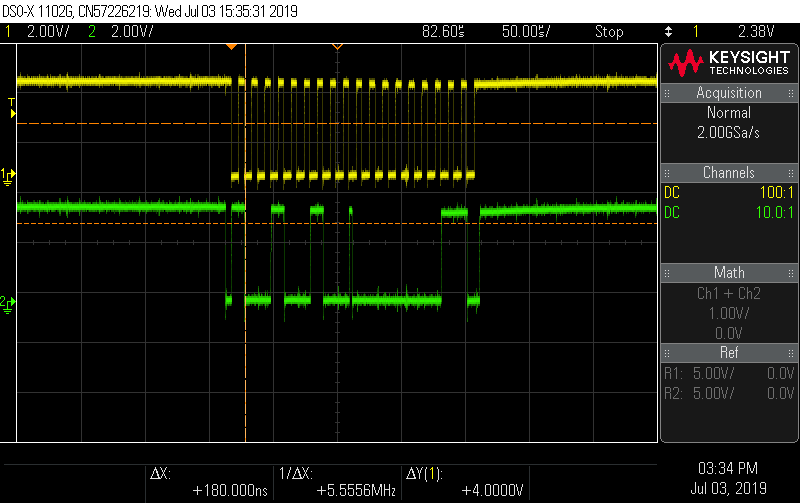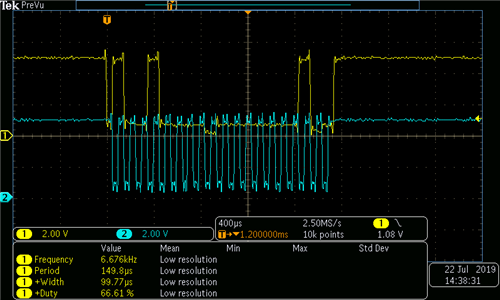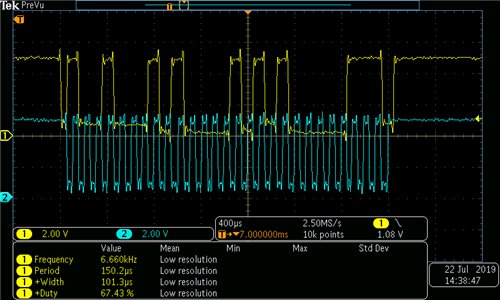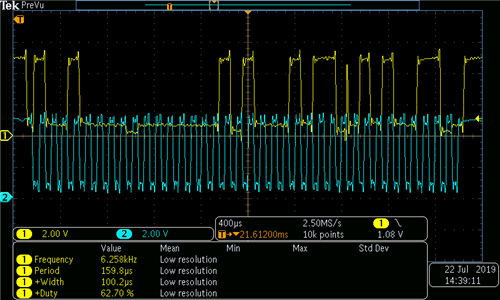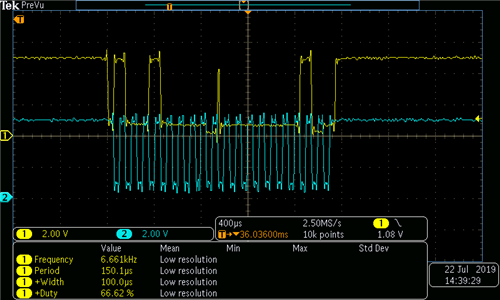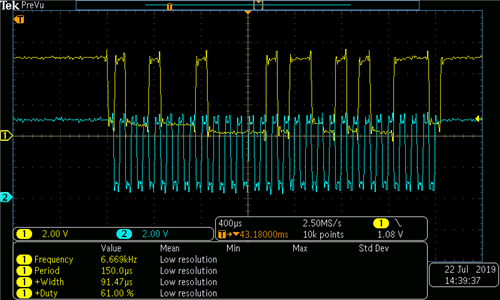Hi All,
I am trying to interface the ADS1015 ADC with an STM32 microcontroller through I2C bus. ADS1015 is acknowledging the address but not acknowledging any data sent after the address.
Please let me know if this is this the correct procedure for writing to the ADS1015 ADC in single shot mode when OS is single?
1. Started transmitting, "START",
2. Accessing Device Address 0x48
3. Acknowledgment for Device Address after a 9th bit is received.
4. Accessing Config Register Adress Pointer 0x01;
5. Acknowledgment for Config Register Adress Pointer after a 9th bit is not received.
On view the oscilloscope it shows a HIGH bit after the 8th bit of Register Address Pointer. Please check the attached image.



